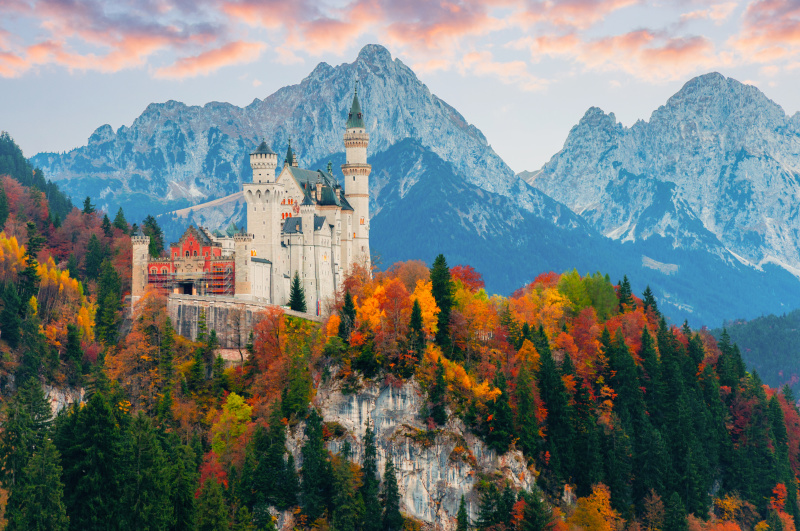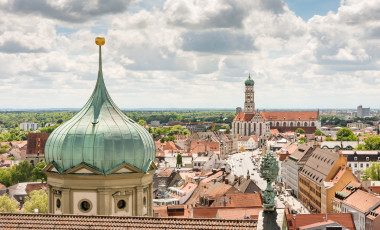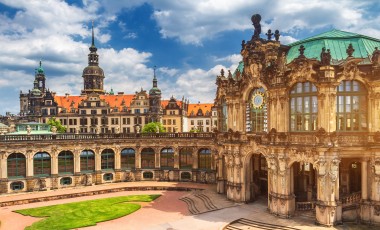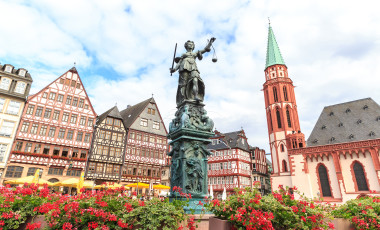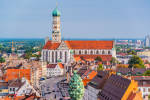A guide to Germany’s many seasons
Given the variety of things to do in Germany – from festivals and events to forest treks and hiking, the ideal time for a German vacation depends just as much on the weather as it does your preference for particular activities and adventures. Whether you want to visit only the cities or admire the beauty of the Rhine Valley in Germany, you should keep in mind that timing is everything.
The German climate follows a predictable central European pattern – warm between April to August and cold from September to March. If you want to increase your chances of a dry holiday, then visit between July and September. Temperatures during this period fluctuate within the 68°F – 86°F range.
Best Time To Visit
overview
we recommend
- Visit Neuschwanstein Castle in winter – a fairytale setting
- Go museum-hopping in Berlin
- Ski down world-class slopes at Garmisch-Partenkirchen
overview
we recommend
- Try out cross country skiing in the Black Forest
- Movie buffs can head to the Berlin International Film Festival – one of the biggest in the world
- Have a good time at the Fasching or Carnival in Cologne
overview
we recommend
- Sample delicious Easter goodies at the Nuremberg Easter Market
- The Leipzig Book Fair is a must-visit for all bibliophiles
overview
we recommend
- Welcome pleasant weather with the Frankfurt Spring Fair
- Walk through a tunnel of cherry blossom trees in Bonn
overview
we recommend
- Sample some of Germany’s finest beer at the Frühlingsfest in Stuttgart
- Head to Beelitz for the Spargelfest and find out why the asparagus is a national obsession
- Hike the Elbe Sandstone Mountains
overview
we recommend
- Celebrate Bach in his hometown of Leipzig at the Bach Festival
- Explore charming Dusseldorf
- Enjoy beachside bliss at Rügen Island
overview
we recommend
- Indulge in water sports in Bodensee
- Enjoy a picnic by the Elbe River in Dresden
- Stroll around Lübeck – a UNESCO World Heritage site
overview
we recommend
- Cruise down the Rhine River
- Drive down the Romantic Road from Wurzburg to Fussen
- Tour the Brandenburg Gate in Berlin
overview
we recommend
- Be part of the merriment that surrounds the Oktoberfest in Munich
- Cycle around the picturesque town of Potsdam
- Enjoy the scenic landscape as you drive down Germany’s Wine Road
overview
we recommend
- Witness the migration of cranes at the East Frisian Islands
- Watch Berlin’s iconic buildings light up at the Festival of Lights
- Delight in brilliant fall foliage at the Black Forest
overview
we recommend
- Try out a spin or two at an ice skating rink
- Be part of the country’s oldest fair at Bremen
overview
we recommend
- Walk under a million lights at the Royal Botanic Gardens at Kew, Berlin
- Get into the festive spirit at one of Germany’s many Christmas markets
- Welcome the New Year at the ‘Party Mile’ in Berlin
Seasons in Germany
Best Season – The best season in Germany occurs over three periods through the year. You will find the highest number of visitors in the country during these times: June to August, Oktoberfest in September, and the Christmas period from mid-November to mid-December. With the Christmas markets opening across Germany between the 22nd to 29th of November, this is one of the best times to visit Germany. Three of the biggest and most popular markets take place in Berlin at the Charlottenburg Palace, in Leipzig at the Marktplatz (market square), and in Nuremberg at the Nuremberg Market Square.
Off Season – The colder German weather kicks off in November and lasts until March/April. Snow is a common occurrence in the South and East across the likes of Dresden, Stuttgart, Augsburg and Munich, with temperatures dropping as low as 33.8°F. By March, snow is less of an issue and intermittent rain is more common.
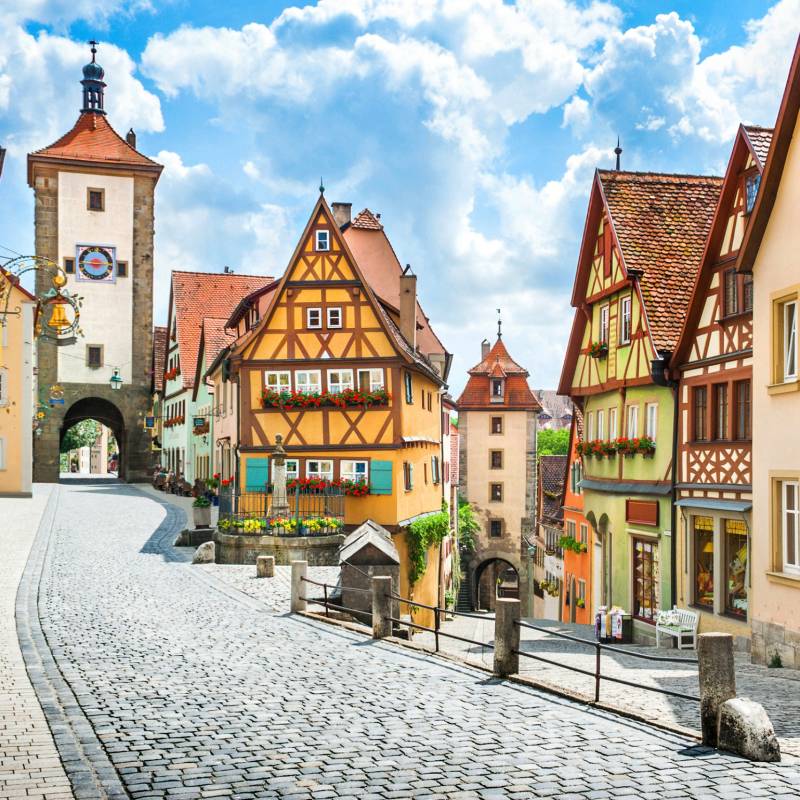
Best Time for Sightseeing
Before you finalize your Germany trip plan, it’s a good idea to be aware of when popular festivals and events are on. The German summer is packed. The Schützenfest Hannover, the Freiburg Wine Festival and the Berlin Culture Festival all take place in July. The Frankfurt Apple Wine Festival is in August. Oktoberfest in September brings huge numbers to every city, particularly Munich. Large crowds and extensive queues are typical during the peak summer months of July to September, so if you prefer it less busy, this might not be the best time to visit Germany despite the great weather. Early summer and October are best if you wish to avoid queues and crowds.

What to Pack for Germany
- Good Walking Shoes – You will get a much better taste of each city by walking. It’s advisable to bring with you at least one good solid pair of walking or running shoes.
- Travel adapter plug – This is a must. And remember–the German one is the two-pronged cylindrical version.
- Rainwear and Sunwear – It’s best to wear comfortable loose clothing and pack a light raincoat and compact umbrella, just to be on the safe side.
- Mobile phone – Check your mobile phone network and have it set up before arrival. It’s also advisable to carry a backup battery or battery pack with you.
- Passport – Please ensure that your passport is valid for at least six months from your date of departure from Germany. You will need about two blank pages in your passport for each country that you visit in Europe.
Our experts are happy to advise you further on when to visit Germany, packing for your trip, and all other essential details. Get in touch with us to plan a private Germany tour tailored to you.

Popular Trips to Germany
Experience the best of German culture during this ten-day tour. Discover Frankfurt, where financial institutions rub shoulders with pretty parks and interesting museums. Explore Berlin’s iconic landmarks and WWII history. Taste a variety of delicious food in Germany’s capital city as well. End the vacation in vibrant and historic Munich, with its beer halls, Bavarian…

Discover some of Central Europe’s most beautiful and historic cities on this enchanting rail journey that takes you through Austria, Germany and Switzerland. Delve into the rich artistic and cultural heritage of Vienna and Salzburg on guided walking tours. The Old Towns of Munich and Zurich, dotted with churches and beautiful heritage buildings will take…
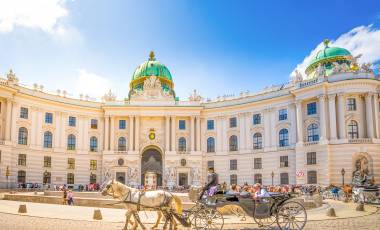
Grand castles, opulent palaces, stately churches, and more are on the cards as you travel through the historically rich cities of Vienna, Salzburg, and Munich. Art and architecture are the main themes as you visit the most famous buildings and monuments of Vienna. Views of rolling hills and vineyards keep you company as you drive…

Discover Germany’s rich history and culture, and admire its stunning landscapes over the course of 11 memorable days. Your journey begins with a walking tour of Berlin. Learn about a tumultuous time in Germany’s past as you visit historic landmarks such as the Reichstag Building, Hitler’s bunker, and the Holocaust Memorial. Go even further back…
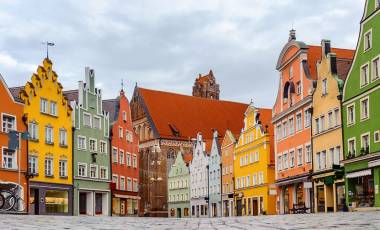
Discover the must-visit destinations in Germany on this short vacation. Explore Berlin, the hub of modern-day art and culture which boasts a rich and unique history. Iconic Nuremberg in the south offers glimpses into Germany’s heritage with its picture-perfect vistas, museums, and architectural sites, as well as World War II history. End your tour at…

Spend your holidays exploring the festive Christmas markets in the heart of Bavaria! Experience the spirit of Christmas on a guided tour of Munich’s traditional markets like Christkindlmarkt, Old Town and Christmas village, where you sample delicious cakes and goodies. Enjoy a romantic boat journey in the Bavarian countryside as you hop from one market…
Sorry, your search found no results.

Best Places To Visit
Things To Do
From medieval castles to fairy tale forests, churches, historic cities and Oktoberfest, discover the top ten things to do in Germany from our destination experts.
Safety
Despite its excellent safety record, it’s still a good idea to be savvy when visiting Germany’s cities and if you’re out and about at night, especially on your own. Here are the top safety tips from our destination experts.
From the Blog

From geothermal spas to celebrated wine and food regions, take a true break from the everyday at these leisurely destinations in Europe.

From dramatic ice caps and jewel-toned lakes to remote islands covered in verdant jungle and volcano craters, explore The Continent differently.

Go off the beaten track, and away from the crowds, to experience these charming European gems.
Sorry, your search found no results.

